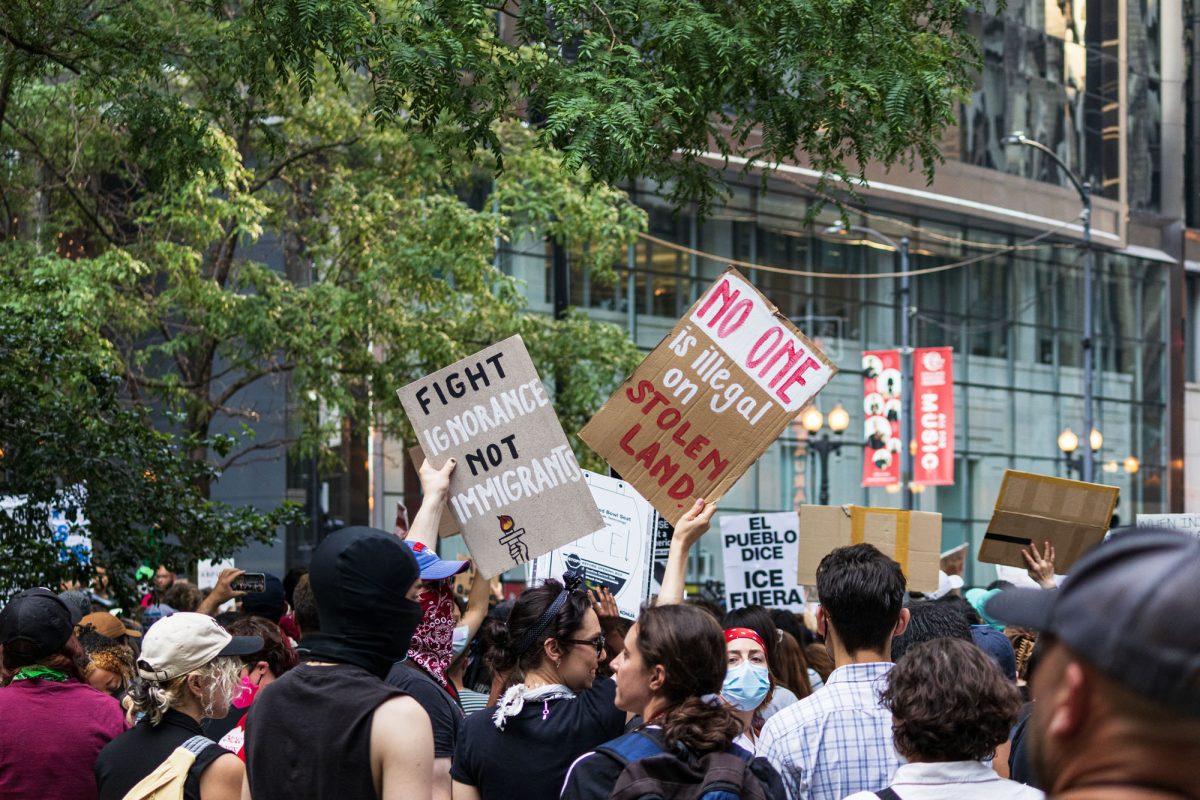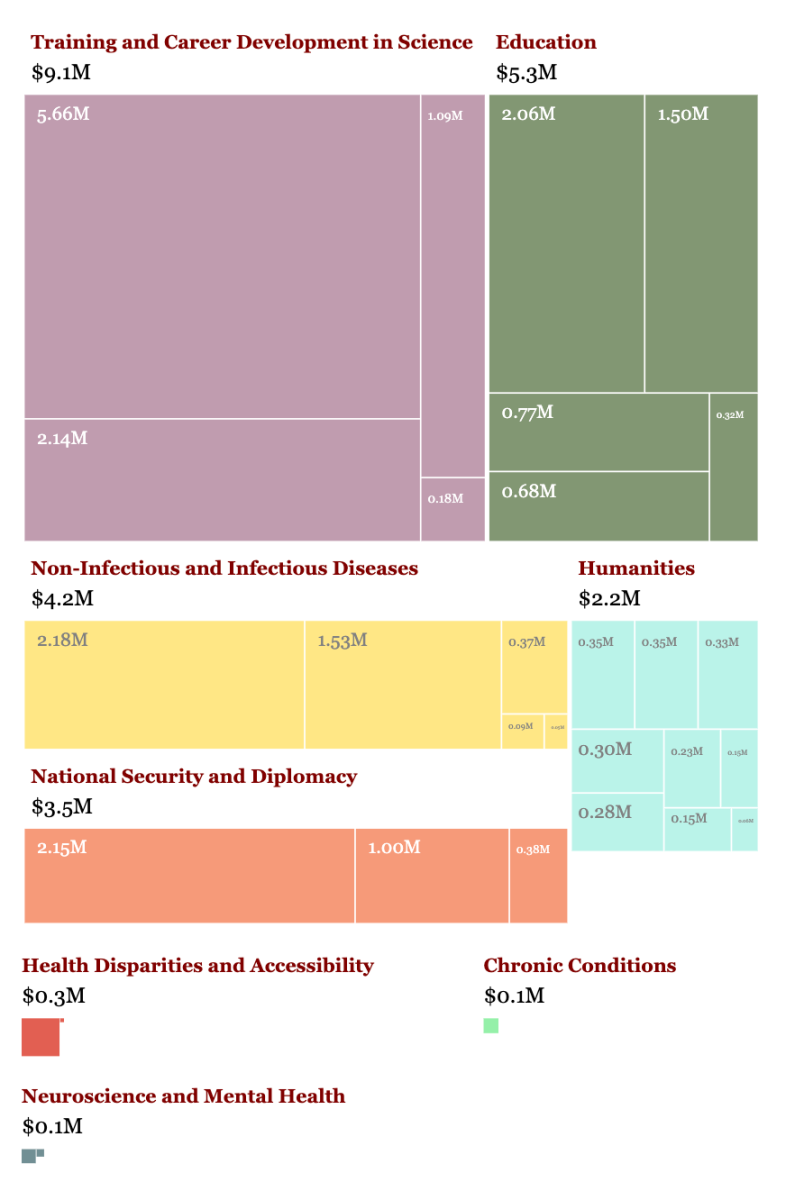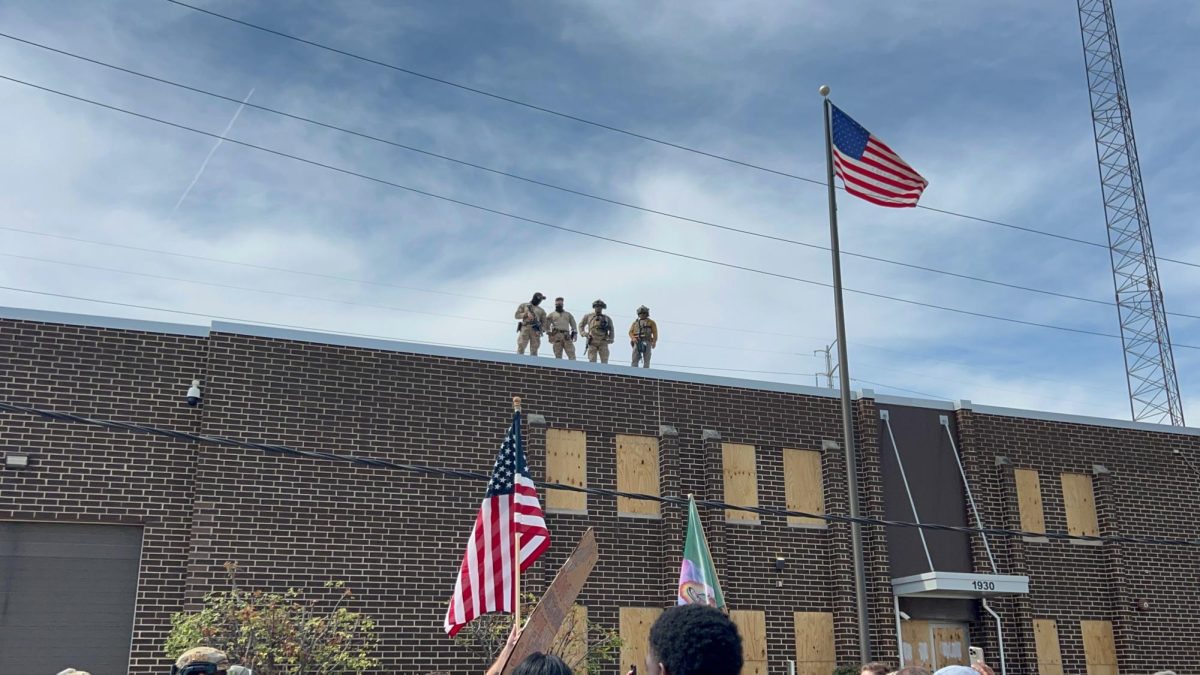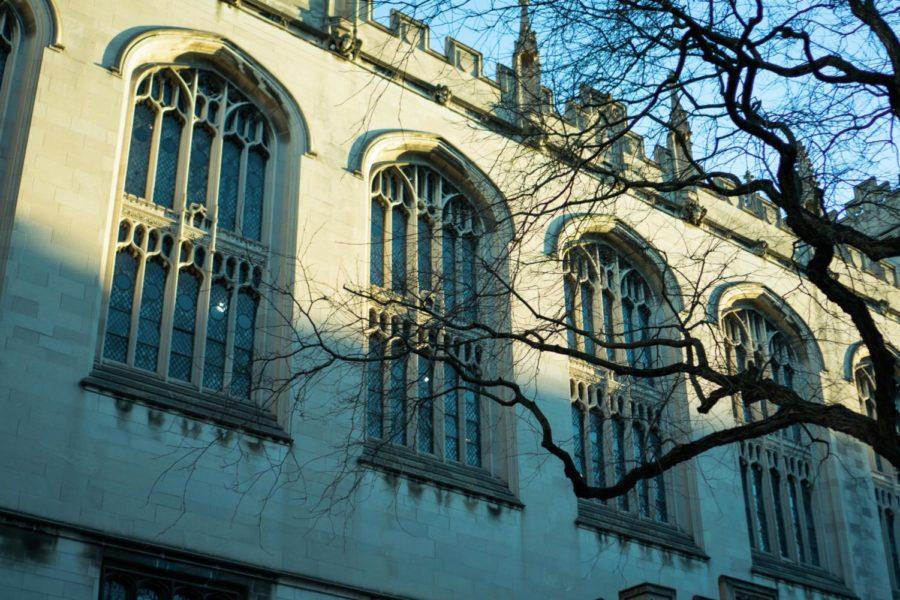Hundreds of federalized National Guard troops arrived in Illinois last week as part of President Donald Trump’s program to conduct mass deportations and crack down on violent crime in Chicago, which Trump has falsely described as “the most dangerous city in the world.”
On October 10, a plan to use those troops to protect federal buildings and Immigration and Customs Enforcement (ICE) personnel was blocked with a temporary restraining order (TRO) issued by U.S. District Judge April Perry, an appointee of former President Joe Biden. A proposed deployment to Portland was also blocked in a separate ruling, and more than 2,000 troops remain in Washington, D.C.
In light of these recent developments, the Maroon spoke to experts on the scope of presidential authority to deploy the National Guard in civilian settings.
Immigration Enforcement in Chicago Draws Widespread Opposition
ICE launched Operation Midway Blitz on September 8, intensifying immigration enforcement activities in the city that had ramped up when Trump took office in January. The Department of Homeland Security (DHS) claims to have arrested more than 1,000 undocumented immigrants in Chicago over the past month. DHS has not announced an end date for the operation.
The enforcement operation has prompted hundreds to demonstrate outside of ICE’s regional facility in Broadview, Illinois, which is currently being used for detention and processing. Protesters have also gathered around immigration courts, where ICE has repeatedly detained noncitizens present for routine hearings.
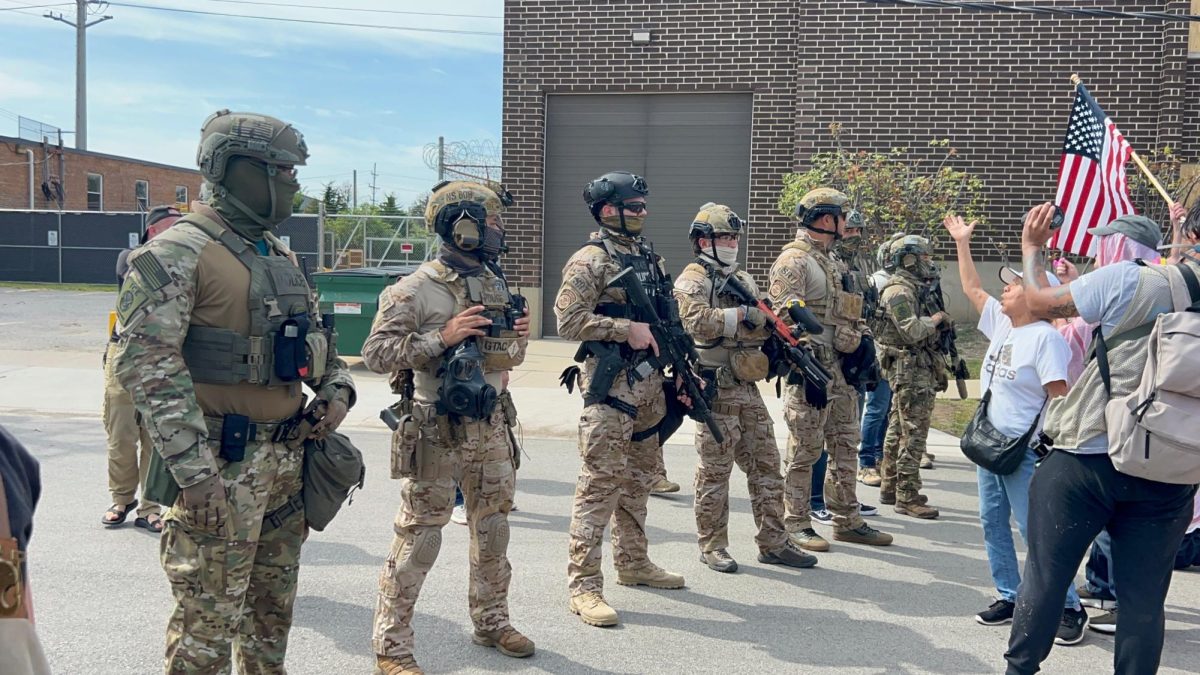
During the demonstrations, federal agents have deployed tear gas, pepper spray, and less-lethal projectiles at protestors, journalists, and bystanders.
On September 19, federal agents shot pastor David Black of the First Presbyterian Church of Chicago in the head with a pepper ball as he prayed outside of the Broadview facility. In Franklin Park, an allegedly undocumented man was fatally shot on September 12 during an attempted arrest by ICE. A University of Chicago professor, Eman Abdelhadi, was arrested by state police and charged with battery and obstruction following a protest on October 3.
On October 7, U.S. District Judge Jeffrey Cummings ruled that some ICE enforcement activities in and around Chicago had violated a 2022 consent decree requiring that the agency not make warrantless immigration arrests without probable cause. ICE stopped following the decree in June, prompting Cummings to extend the decree by 118 days—the length of time ICE has been in “material non-compliance”—to February 2, 2026.
Among the most controversial of ICE’s recent enforcement activities was a “military-style” raid last month on an apartment complex in South Shore, four miles from campus.
Federal agents dropped into the building from helicopters, kicked down doors, and held zip-tied adults and children outdoors for hours before ultimately releasing some and taking 37 others into custody. DHS claims that members of the Venezuelan gang Tren de Aragua were among those arrested.
“I asked [agents] why they were holding me if I was an American citizen, and they said I had to wait until they looked me up,” a resident of the apartment complex told the Chicago Sun-Times. “I asked if they had a warrant, and I asked for a lawyer. They never brought one,” he said.
According to eyewitnesses, some children were taken out of the building without clothes on and separated from their parents.
The raid was condemned by Illinois Governor J. B. Pritzker and Chicago Mayor Brandon Johnson, who later signed an executive order barring the use of city property for civil immigration enforcement operations. Democratic members of the House Judiciary and Homeland Security committees have also announced an investigation into the raid.
Elected officials are not the only ones taking action against the Trump administration.
A coalition of news outlets and local residents—including Block Club Chicago, the Chicago Headline Club, and the Illinois Press Association—filed a lawsuit on October 6 alleging First Amendment violations by federal agents against protesters and journalists. In response, U.S. District Judge Sara Ellis ordered that federal agents no longer use or threaten to use force against journalists or protesters “who are not themselves posing a threat of imminent physical harm to a law enforcement officer or another person.”
It is unclear, however, what recourse individuals have if federal agents violate the order or otherwise violate the civil rights of protesters.
While there are “some grounds under federal law to bring a civil action against federal officials under the Fourth Amendment or a suit against the federal government under other specialized federal statutes… the precise cause of action and the grounds for litigation have become narrower in their scope and more difficult to pursue in recent years,” said Darrell Miller, a professor at the University of Chicago Law School.
Recent U.S. Supreme Court rulings have limited the scope of Fourth Amendment claims under Bivens v. Six Unknown Federal Narcotics Agents, especially in the realm of immigration enforcement. And, while the Federal Tort Claims Act does provide some avenues for litigation, the “discretionary functions” exception makes claims difficult to prove.
“[The Trump] administration is using that lack of clarity to act first and worry about legality later,” he said.
Experts Question Legal Basis for Deployment
When asked for comment on the deployment, a Department of War press officer referred the Maroon to a webpage outlining the Federal Protection Mission under which approximately 500 National Guard troops from Texas and Illinois were federalized. As of October 11, the page was updated to note Perry’s TRO.
“The National Guardsmen were mobilized for an initial period of 60 days and will be under the command and control of the Commander of U.S. Northern Command,” the page read. “These forces will protect U.S. Immigration and Customs Enforcement and other U.S. Government personnel who are performing federal functions, including the enforcement of federal law, and to protect federal property.”
In her ruling, Perry argued that the rationale offered by DHS—that federal troops are necessary to quell violence in Chicago—is “simply unreliable.” Additionally, Perry said that the success of plaintiffs in other lawsuits against federal law enforcement “cast significant doubt on DHS’s assessment of what is happening on the streets of Chicago.”
The TRO blocking federal troops from operating within Illinois expires on October 23, with a hearing on whether to extend the order scheduled for October 22. An appeals court has allowed federalized troops to remain in Illinois but did not stay the TRO.
Title 10, Section 12406 of the U.S. Code allows the president to “call into Federal service members and units of the National Guard of any State” under limited circumstances, such as invasion, rebellion, or an inability to enforce the law with civilian law enforcement.
But legal experts describe the administration’s recent use of Title 10 as novel. “This law hasn’t been used in this way before, by any previous president,” Elizabeth Goitein, senior director of the Liberty and National Security Program at the Brennan Center for Justice, told NPR on October 7.
Emails presented during the TRO hearings also call into question the federal government’s argument that they are currently unable to enforce the law with federal and local law enforcement.
“I just wanted to pass along the effectiveness of this Unified Command, from our perspective at [Broadview],” ICE Assistant Field Office Director Peter Sukmanowski wrote to others with @ice.dhs.gov addresses. “It’s clear that [Illinois State Police] is the difference maker in this scenario, and we are grateful for their leadership. Hopefully, we can keep it up for the long-haul.”
While National Guard troops are deployed under Title 10 status, the 1879 Posse Comitatus Act “generally forbids” them from participating in civilian law enforcement activities unless authorized by a separate act of Congress like the Insurrection Act, according to Miller. The act only applies to National Guard troops that have been federalized; members of the Guard under the command of a state governor are permitted to make civilian arrests.
However, “legal ambiguities about the National Guard’s role in supporting federal immigration enforcement [are] being exploited by the Trump administration to normalize the presence of armed military in the cities and towns of the United States,” Miller said.
The Federal Protection Mission also contemplates the use of federal troops to “temporarily detain an individual to stop an assault of, to prevent harm to, or to prevent interference with federal personnel performing their duties.”
Ultimately, Miller believes “the [Trump] administration wants to invoke the Insurrection Act, which does allow the president to use active duty military domestically to quell an insurrection.” The Act was last used in 1992, when President George H. W. Bush—at the request of California Governor Pete Wilson—brought in the National Guard to quell the Los Angeles riots.
“They’ve been talking about using this act even before the 2024 election,” Miller said. “The administration’s hesitation is [out of] concern that the courts will strike down invocation of the Insurrection Act as unsupported by the reality of facts on the ground.”



